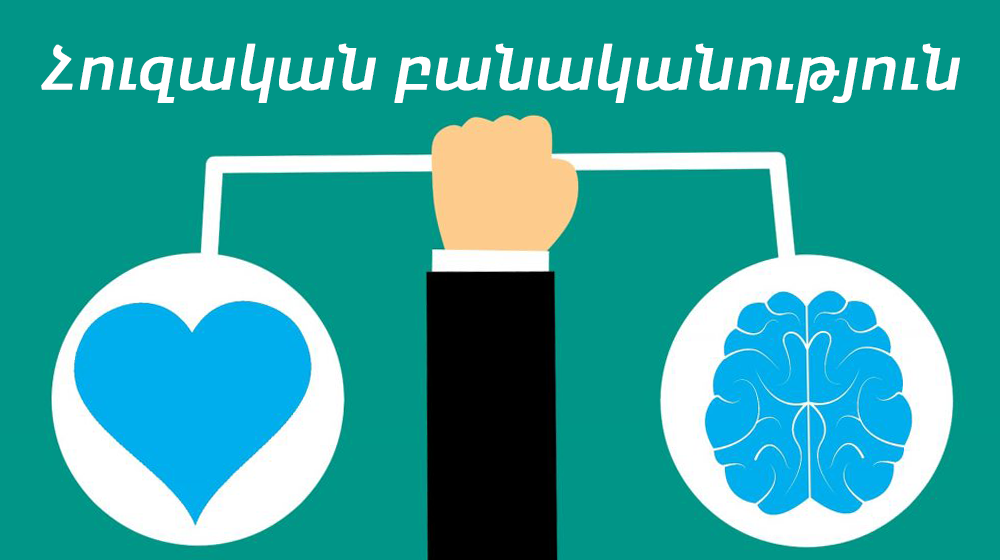Յոգայի 10 առավելություն / Սկիզբ առնելով Սանսկրիտերենի “յուջի” բառից, որը թարգմանաբար նշանակում է միություն ՝ յոգան համարվում է հնադարյան պրակտիկա, որը միավորում է հոգին և մարմին. Այն իր մեջ ներառում է շնչառական վարժություններ, մեդիտացիա, և դիրքեր ստեղծված՝ Ձեր օրգանիզմի լարվածությունը նվազեցնելու և սթրեսի մակարդակը իջեցնելու համար. Ստորև ներկայացնում ենք Ձեր դատին յոգայի 10 ամենակարևոր առավելությունները.
Բարելավում է մարմնի ճկունությունը
Ճկունության ձեռքբերումը յոգայի ամենաառաջին և ամենաակնհայտ օգուտն է. Ձեր առաջին դասի ընթացքում դուք դժվար թե կարողանաք ձեռքով դիպչել Ձեր ոտքի մատերին, բայց եթե նույն հաճախականությամբ մասնակցեք յոգայի դասերին, դուք աստիճանաբար կզգաք մկանների թուլացում և ի վերջո կնկատեք,որ անհնարին դիրքերը կդառնան հնարավոր. Դուք հավանաբար նաև կսկսեք նկատել, որ անցյալում ունեցած որոշակի ցավեր մարմնի տարբեր մասերում կանհետանան.
Ուժեղացնում է մկանային համակարգը.
Զարգացած և ուժեղ մկանները անում են ավելին քան Ձեր գեղեցիկ կազմվածքի ապահովումը. Նրանք մեզ պաշտպանում են այնպիսի հետևանքներից, ինչպիսիք են արթրիտը և մեջքի ցավը. Երբ դուք յոգայի միջոցով կառուցում եք դիմադրողականություն և ամրություն, սկսում եք բալանսավորել դրանք Ձեր ճկունության հետ. Իսկ եթե դուք պարզապես հաճախեիք մարզադահլիճ և ծանր քաշային վարժություններ կատարեիք, միգուցե և ձեռք բերեիք ամրություն միայն ձեր ճկունության շնորհիվ.
Նվազեցնում է ստրեսի առաջացման աստիճանը ձեր օրգանիզմում.
Յոգան հայտնի է իր սթրեսի և լարվածության նվազեցման ունակությամբ. Նույնիսկ որոշակի ուսումնասիրություններ ցույց են տվել,որ յոգան կարողանում է իջեցնել կորտիզոնի արտազատությունը, որը համարվում է սթրեսի առաջնային հորմոնը. Ամենաստացված ուսումնասիրության ժամանակ օգագործել են 24 կանանց, ովքեր պնդում էին,որ սթրեսի աստիճանը բավականին բարձր է իրենց օրգանիզմում. Երեքամսյա յոգա ծրագրից հետո, նրանց օրգանիզմում կորտիզոնի աստիճանը բավականին նվազել էր, նրանք նույնիսկ պնդում էին, որ իրենց կյանքի որակն է բարելավել.
Թեթևացնում է օրգանիզմում անհանգստությունը
Շատ մարդիկ սկսում են իրենց յոգայի ճանապարհը ՝ հույս ունենալով թեթևացնել իրենց հոգում բուն դրած անհանգստությունը, և բավականին հետաքրքիր է,որ կան մի շարք ուսումնասիրություններ,որոնք ապացուցում են մեզ, որ յոգան իսկապես օգնում է այս հարցում. ՈԻսումնասիրություններից մեկի ժամանակ 34 կին, ովքեր ունեին ակնհայտ խնդիրներ լարվածության և անհանգստության հետ,մասնակցեցին յոգայի դասընթացների շաբաթական երկու օր երկու ամի.
Թեթևացնում է օրգանիզմում անհանգստությունը
Դասընթացների վերջում նրանք ովքեր մասնակցել էին, խոստովանեցին, որ ավելորդ լարվածությունը և անհանգստությունը բավականին նվազել է իրենց օրգանիզմում. Ամբողջապես պարզ չէ, թե ինչպես է յոգան ազդում այսպիսի ախտանիշների վրա, սակայն այն ընդգծում է ներկայում ներկա լինելու կարևորությունը և օգնում է գտնել խաղաղություն հոգում.
Բարելավում է սրտի աշխատանքը
Ուսումնասիրությունները ցույց են տվել,որ յոգան կարող է բարելավել սրտի առողջությունը, և կարող է նվազեցնել սրտի որոշակի հիվանդությունների ռիսկային գործոնը. Ուսումնասիրություններից մեկը ցույց է տվել, որ այն քառասունն անց մարդիկ,ովքեր զբաղվում են յոգայով 5 տարի անընդմեջ և ավել,ունեն ավելի ցածր արյան ճնշում, քան նրանք ովքեր չեն զբաղվում. Արյան բարձր ճնշումը սրտային հիվանդությունների(սրտի կաթված,ինսուլտ) առաջնային պատճառներից է. Իջեցնելով արյան ճնշումը կապահովագրվեք վերոնշյալ հիվադություններից.
Բարելավում է կյանքի որակը
Յոգան վերջին տարիների ընթացքում ավելի ու ավելի մեծ հայտնիություն է ձեռք բերում որպես հատուկ թերապիա հազարավոր մարդկանց համար ՝ կյանքի որակը բարելավելու գործում.
Ուսումնասիրություններից մեկի ժամանակ 135 տարեցի առաջարկել են մասնակցել կամ 6 ամսյա յոգայի դասերի, կամ քայլարշավների. Վեց ամիս անց յոգա ընտրողները միաձայն համաձայնվեցին այն մտքի հետ, որ այն բարելավում է կյանքի որակը, ինչպես նաև ազդում է տրամադրության վրա, վերացնում է հոգնածության զգացումը. Մյուս ուսումնասիրությունները ցույց են տալիս ոչ միայն յոգայի ազդեցությունը կյանքի բարելավման վրա, այլ նաև ապացուցում, որ այն կարող է նվազեցնել քաղցկեղային ախտանիշները հիվանդների մոտ. Ուսումնասիրությունը կատարվել է մի կնոջ վրա, ում ախտորոշել էին կրծքի քաղցկեղ և նրան սպասվում էր քիմիոթերապիա. Յոգան նրան օգնեց նվազեցնել քիմիոթերապիայի ախտանիշները, ինչպիսիք են սրտխառնոցը և ործկումը.
Կարող է թեթևացնել միգրենային գլխացավերը.
Միգրենը հաճախ կրկնվող ուժեղ գլխացավի տեսակ է, որը ավանդաբար բուժվում է միայն դեղամիջոցների շնորհիվ՝ ցավը փոքր ինչ թեթևացնելու համար. Կան հազարավոր ուսումնասիրություններ,որոնք ապացուցում են,որ յոգան կարող է թեթևացնել միգրենային ախտանիշները, որոնցից մեկի ժամանակ ընտրվել է 60 հոգի, որոնցից կեսը պայքարել է գլխացավի դեմ յոգայի հետ միասին, մյուսները՝ առանց. Ուսումնասիրությունը ցույց է տվել,որ յոգան բավականաչափ ազդել է գլխացավերի հաճախականության վրա.
Խթանում է, որպեսզի ձեռք բերեք առողջ սնվելու սովորություն.
Կենտրոնացած սնվելը, որը կոչվում է նաև ինտուիտիվ սնվել, մի գաղափար է, որը խրախուսում է Ձեզ ներկա լինել սնվելու պահին, այսինքն ուշադրություն դարձնել Ձեր սննդի համին, հոտին և կառուցվածքին, ինչպես նաև ուշադրություն դարձնել թե ինչ մտքեր կամ զգացողություններ ունեցաք սնվելու ժամանակ.
Այս պրակտիկան ապացուցված է, որ նպաստում է Ձեզ՝ առողջ սնվելու սովորություններ ձեռք բերել,որն էլ իր հերթին կօգնի կառավարել արյան մեջ շաքարի աստիճանը, կօգնի ավելի արագ քաշ կորցնելու հարցում և կվերացնի ձեր խանգարված սննդակարգը.Քանի որ յոգան նույնպես շեշտը դնում է մաքսիմալ կենտրոնացման և ներկա պահը զգալու վրա, ապա այն միանշանակ կօգնի Ձեզ հաղթահարել առողջ սնվելու սովորություն ձեռք բերելու հարցում.
Օգնում է բարելավել շնչառությունը.
Պրանայաման կամ յոգային շնչառությունը, հատուկ պրակտիկա է յոգայում, որը կենտրոնանում է շնչառությունը կառավարելու վրա՝ հատուկ տեխնիկաների և վարժությունների միջոցով. Յոգայի հիմնական տեսակները ներառում են այս շնչառական վարժությունները և մի շարք ուսումնասիրություններ ապացուցում են, որ յոգան օգնում է շնչառության բարելավմանը.
Ուսումնասիրություններից մեկի ընթացքում քոլեջների 287 ուսանող անցան 15 շաբաթանոց դաս, որի ժամանակ նրանց սովորեցրել էին տարբեր յոգայի դիրքեր և շնչառական վարժություններ.Կուրսի վերջում նրանց մոտ բավականաչափ բարձրացավ կենսական կարողությունը, որը չափանիշն է, թե որքան օդ կարող է դուրս մղվել Ձեր թոքերից. Դա հիմնականում կարևոր է նրանց համար, ովքեր ունեն թոքերի կամ սրտի հետ խնդիրներ, ինչպես նաև ասթմա.
Բարելավում է քնի որակը
Վատ քունը հիմնականում կապված է ճարպակալման, բարձր արյան ճնշման և դեպրեսիայի հետ. Ուսումնասիրությունները ցույց են տվել, որ յոգան ներառելով Ձեր կյանք՝ անմիջապես կզգաք բարելավում ձեր քնի մեջ. Ուսումնասիրություններից մեկը կատարվել է լիմֆոմա ունեցող հիվանդների վրա, և ապացուցվել է, որ նվազել է քնի հետ կապված խանգարումները, բարելավել է քնի որակը և տևողությունը, և նվազել է քնաբերներ օգտագործելու կարիքը.








